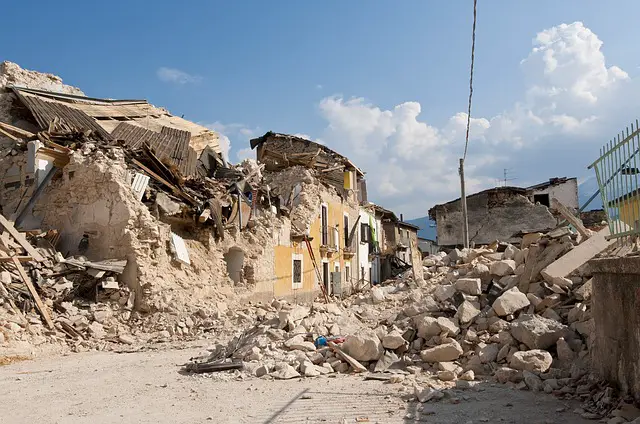Introduction
People in developing countries are four times more likely to die in a natural disaster, as people in the developed world. The cities of the developing world that seek economic opportunities are growing at unprecedented rates and attracting migration of people from the rural areas. Often their only choice is to live in disaster-prone areas such as flood zones and dangerous hillsides. This vulnerability will only increase as rapid urbanization in the developing world continues at an alarming rate. Poor environmental management and reduced capacity of government authorities to manage growth appears to be affecting the frequency and severity of damage in urban areas that result from natural disasters. This is significant, as many of the most populated cities in the world are located in coastal zones and other areas that are vulnerable to disaster risk. Crowded into makeshift homes in slums with barely passable streets, the urban poor are the ones that most often suffer greatly from a natural disaster event, in terms of loss of life, assets and livelihood. Beyond the devastating impact on individuals, natural disasters destroy businesses and municipal assets and divert economic development efforts away from economic growth to relief and rehabilitation. To avoid unnecessary loss of life and the long-term derailment of economic growth and to provide improved prosperity to the poorest sectors of the population, the developing world is beginning to develop strategies on how to reduce the impacts of disasters before the disaster strikes and reduce the vulnerability to their communities. Pre-disaster mitigation efforts involve assessing the risks, prioritizing what needs to be done, and then implementing these plans into actions that will, in the end, save lives and reduce property damage in the wake of a disaster event.

Also Read: Disaster resilience and management in Indian urban areas
Techniques To Prevent Disaster
Building Political Support for Preventive Action
The unpredictable nature of disasters makes it attractive for local political leaders to ignore them, either hoping that disaster will not strike their city or that, if it does, they can rely on outside assistance. This is the type of thinking that needs to be changed if cities in the developing world that are at risk to disasters are going to achieve long-term sustainability. Although there will always be a need for outside assistance in the wake of a disaster, it is in a developing country’s best interest to take pro-active steps to reduce their vulnerability to disasters. Once it is recognized that human decisions and actions can increase or decrease vulnerability to natural disasters, it makes sense to develop action plans that can work to decrease vulnerability. It is the national government of these developing nations that must provide the leadership and incentives to encourage regional and local governments to practice pre-disaster mitigation. In the case of Mexico, the federal government determined that the country was losing too many lives and spending too much money on reconstruction following natural disasters. Its Fund for Natural Disasters developed transparent cost-sharing formulas for disaster relief and reconstruction activities that can communicate the possible costs they will incur from a disaster to state and municipal governments, and thus spur them to develop ways to mitigate their vulnerability. Following a devastating earthquake in the city of Bhuj, the state of Gujarat in India established a disaster mitigation authority so that other cities in the state would take steps to reduce their vulnerability. This focus on the vulnerability of cities is new in India as disaster management used to be the responsibility of the Ministry of Agriculture only, which focused mostly on rural areas. It is necessary to encourage action in cities where large population centers are at risk and also where people can best identify risks and then manage their natural resources, direct their infrastructure investment and make other decisions with these risks in mind.
Risk Mapping
The first step in pre-disaster mitigation is assessing the risks to the particular community though determining the frequency and severity of natural hazards that are likely to occur in the community. Tools that can be used include scenario analysis, based upon known risks or past disaster events, zonation studies, risk indexing, and risk matrices. Scenario analysis simulates a specific event and then proceeds to map its impact upon the built environment, the population and economy. Zonation studies delineate areas of high hazards which helps city leaders and officials to make decisions during the urban planning and growth management process. Risk indexing helps policymakers prioritize their risks, as it compares risk exposure among different geographical units and estimates the potential human and economic losses due to a natural disaster. A risk matrix will plot the various types of hazards along the two dimensions of risk – probability (frequency) and severity. While some hazards such as earthquakes may be unpredictable events, the losses may be very high when they occur. Determining the risk of different hazards – floods, earthquake, high winds and flood risk events – is key to decision makers because each will require different responses in terms of mitigation measures, warning systems and preparedness activities that should be in place before the disaster strikes.

Also Read: Risk Mapping, Assessment and Planning (Risk MAP) | FEMA.gov
Disaster Management Plans
Once a city has assessed its vulnerability, it must then identify the priorities that are necessary to reduce vulnerability and then develop a plan to mitigate disaster risks in these priority areas. While purchasing insurance or issuing catastrophe bonds to cover the loss of assets and tax revenue following a disaster is one way of financing recovery, it does not reduce the impact of the disaster. In the U.S., the Federal Emergency Management Agency has promoted a community-based approach to reducing vulnerability that includes averting the hazard (building dams to control floodwaters), avoiding the hazard (moving parts of communities out of floodplains) and adapting to the hazard (constructing earthquake-proof buildings). To be effective, disaster mitigation should be integrated into the overall city planning process, in particular decisions that are made in regard to new development and the retrofitting of infrastructure, land use, and environmental management. One example of this is in the Caribbean where studies have shown that degradation and destruction of natural protective structures that reduce wave impacts can increase the intensity of windstorms, thus causing more damage in a hurricane or other high wind storm event. Deforestation of mountain slopes also increases erosion, and the sediment that enters the flood zones can increase flood risk by changing the flow patterns of rivers and streams. An important part of disaster mitigation for cities in developing countries is preventing people from settling on hazardous land and if they are already settled in such places, removing them from these hazardous areas. When the land is inherently hazardous, it is the job of the municipal, regional and/or national government to relocate the inhabitants and prevent people from returning to these vulnerable areas.
Safer Construction and Urban Planning
The collapse of buildings and damage to infrastructure during natural disasters causes both casualties and economic losses. Several developing countries prone to earthquakes have developed approaches to safer construction and urban planning. In Turkey, pilot municipalities are developing means for effective implementation of building codes and municipal regulations that will work towards ensuring that builders follow appropriate designs and permitting procedures and then implementing programs to evaluate the need to retrofit existing buildings. While effective regulation is the most appropriate tool for improving safety in commercial and multi-residential buildings, technical assistance with construction methods may be the most effective tool for helping the poor who construct their own homes. In Peru, a local NGO helped families reconstruct their homes using local material capable of withstanding earthquakes. In Kathmandu, Nepal, a mason training program is also helping develop good construction methods and designs. Slum upgrading projects can also greatly reduce vulnerability of poor communities if they are done in a manner that takes into account the vulnerability of that community to disasters.
Also Read: How urban planning can contribute to resilience and disaster risk reduction
Economic Development
Natural disasters have many direct and indirect economic costs. In Asia, floods have cost the economies of this region $15 billion per year in the 1990s, mostly from infrastructure losses. To reduce these losses, effective disaster mitigation plans can help determine the appropriate ways to site businesses and infrastructure in a manner that will not expose them to disaster risk. Business entrepreneurs also need to be aware of their risks to natural disasters so that they can make plans for keeping their businesses alive and to protect their workers even after a disaster event. While it is difficult to quantify the direct and indirect economic costs of a disaster, there is a real loss of human capital and productivity from workers that have been displaced and or killed. As there is potential for natural disasters to create volatility in the economy, foreign investors will become wary to invest in such communities if their investments cannot be protected. Cities that can identify and manage their economic risks in a proactive manner can decrease volatility and vulnerability to the economic structure of the community.
The Culture of Prevention
A culture of prevention is important for keeping awareness alive so that citizens and businesses do not become complacent when a disaster has not struck for a long period and people should not forget their vulnerability. In Mumbai, an expert panel has helped to develop a partnership between the academic community and the city to promote a “culture of prevention”. Once the community understands that they are always at risk to natural disasters through the effective communication of those risks to the community at large, the next step is for the government to invite the community to be involved in implementing a community-based plan reducing their vulnerability. One way to do this is to approach the various constituencies (from the religious leaders, youth, NGOs, etc.) and create a dialogue on ways in which the broadest representation of the community can become involved in the pre-disaster mitigation efforts of the city. Beyond creating awareness, activities such as helping people build safer housing will directly reduce the community’s vulnerability, save lives and add economic value to the community.
Note: The article above is not written by Planning Tank/ Its members or contributors. It is a part of number of valuable information which is now lost because the original source of this content has been deleted/ moved/ inaccessible/ archived. We are making an attempt to bring valuable content from over the internet and other sources which we believe will be helpful for people. We do not own any rights to this content. For any queries/ complaints/ feedback/ removal requests kindly contact us through email.